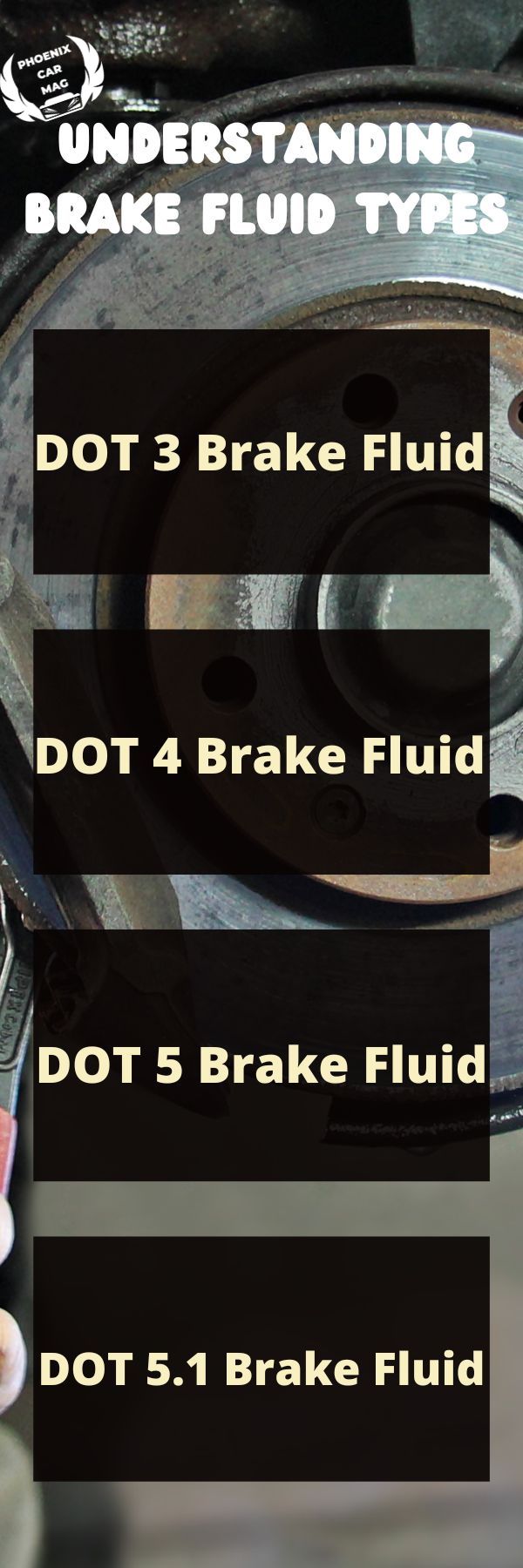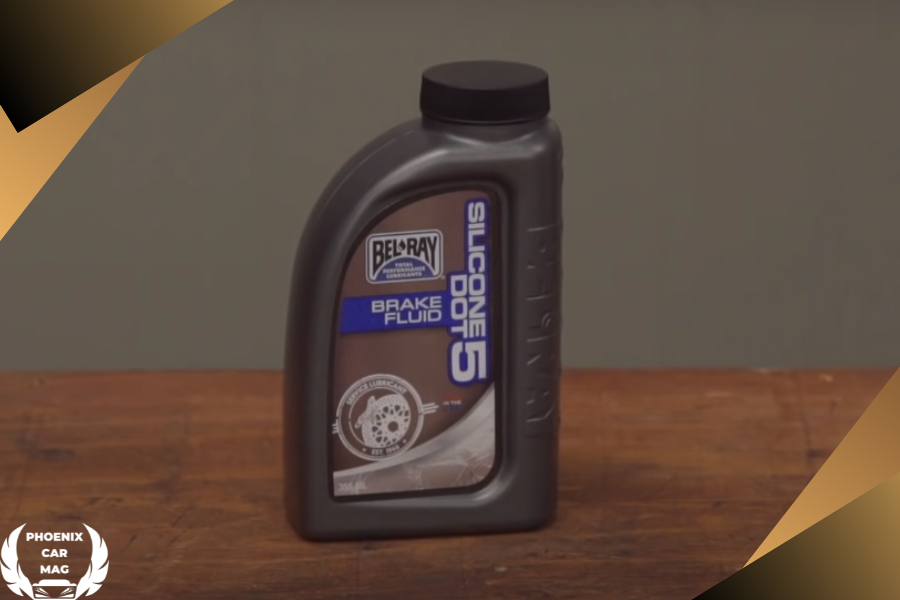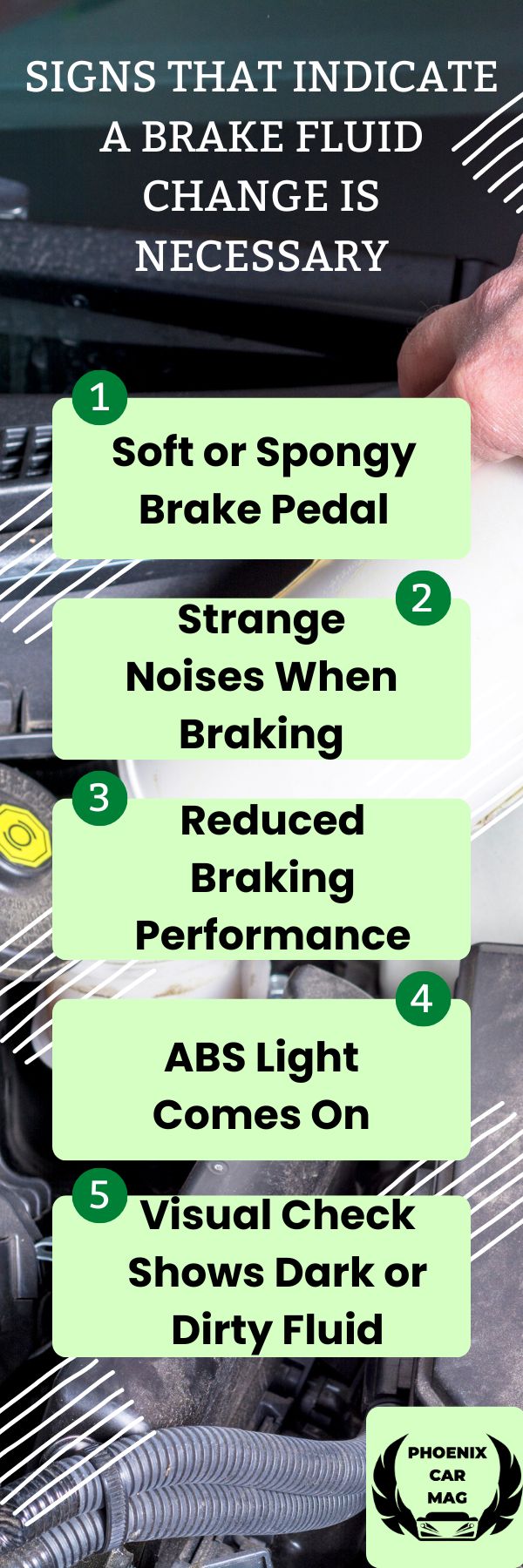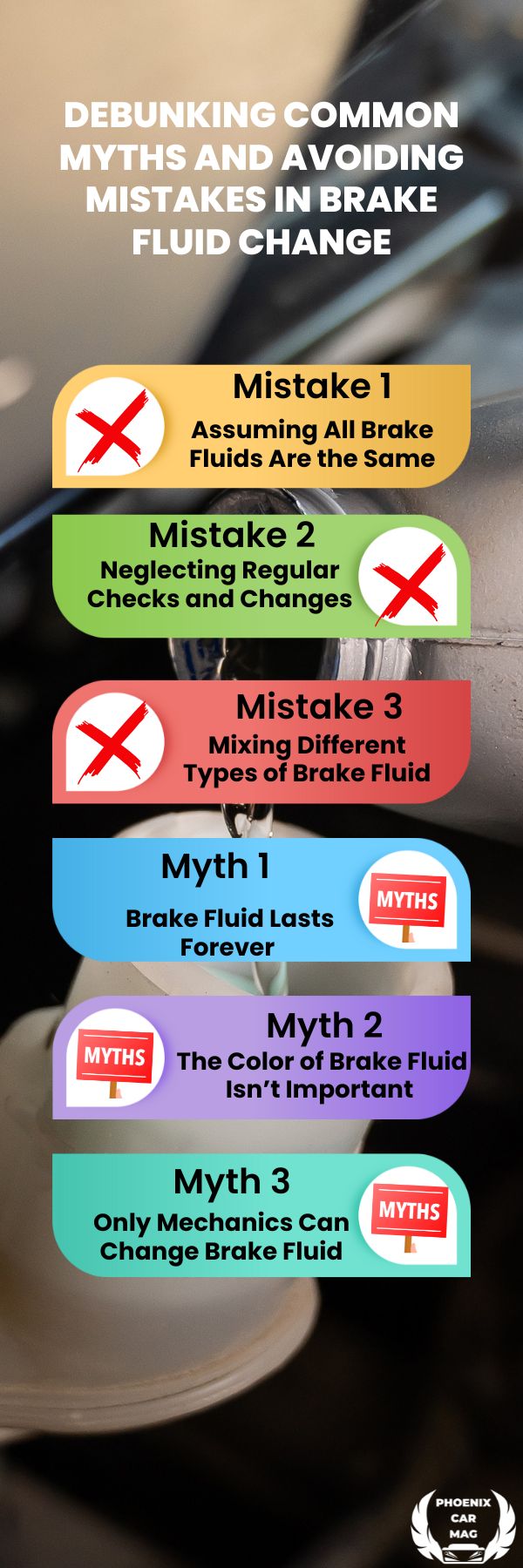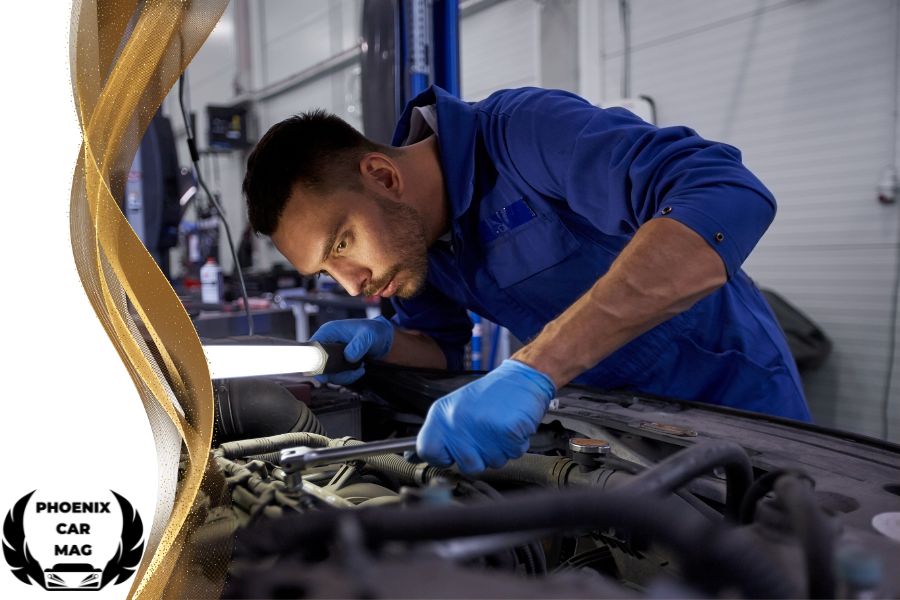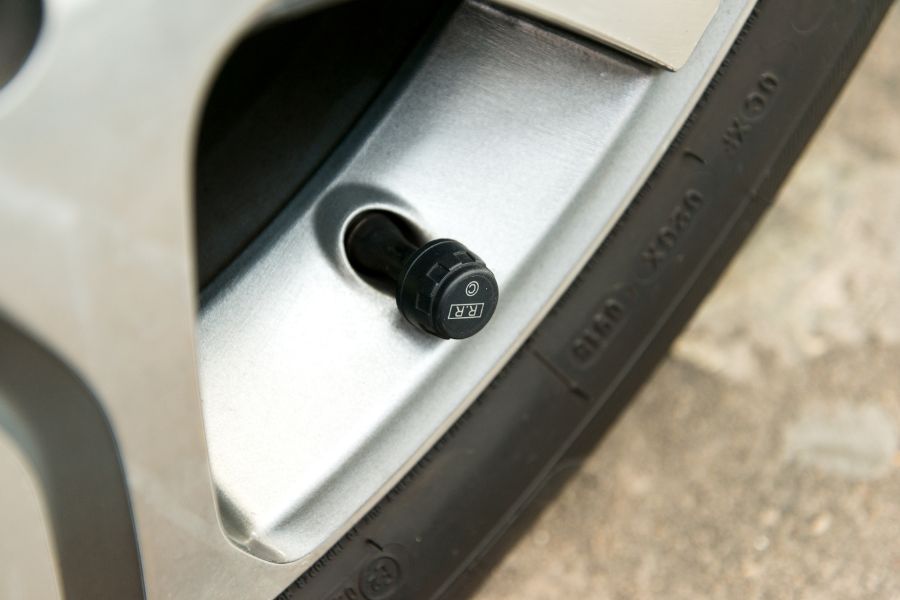Imagine a glorious day when you are driving your reliable vehicle. Everything is good and you’re enjoying your drive. Once you press the brake pedal, all of a sudden all this enjoyment gives it a place to scare and concern. Why? Because the brake is hesitant. It’s not as effective as it should be.
I’m Isaac V. Mace and today it’s time to discuss the brake fluid. I’m an experienced automotive expert with several real-life experiences of dealing with various cars. I’m here to address the importance of brake fluid, mention the proper time to change it, teach you how to change that, and address the potential risks of brake fluid ignorance.
Brake fluid plays the role of oodles in your brake system. By passing time this fluid can be degraded or contaminated. Your job is to change it in these situations and if you don’t, you face a significant drop in the brake’s efficiency thus leading to safety risks on the road. In order not to face this situation, you should be aware of signs of degraded brake fluid and its cost.
In the following section, I guide you through important factors that you should consider about brake fluid. It includes the symptoms of a low-quality brake fluid and the average cost of changing that.
Stay tuned to gather this piece of reliable information as it comes from my hands-on experience and greasy hands during these years. Each car owner has to know these things to maintain his car in its best condition.
You might also enjoy: What Happens If You Unplug Idle Air Control Valve [2024] – My Personal Experience
Understanding Brake Fluid Types and Their Differences
One of the valuable things that I’ve learned from my long-term experience is that despite being underrated, the brake fluid is a vital part of the brake system. Let’s provide you with key information about the brake fluid and its types.
Typically, there are four types of brake fluid. Each has its unique specifications and usages. They include DOT 3, DOT 4, DOT 5, and DOT 5.1.
DOT 3 Brake Fluid
- Overview: It’s q glycol-ether based fluid and it’s most used in most of standard passenger vehicles.
- Boiling Points: Its average dry boiling point is around 205°C and its wet boiling point is around 140°C. Compared to other brake fluids, it has a lower boiling point.
- Usage: It’s the most convenient choice for daily driving and standard vehicles. It’s said to be reliable for normal driving conditions and environments.
- Considerations: As it absorbs moisture with time there would be a decrease in its efficiency. So regrowth maintenance and timely changes would be helpful and effective.
DOT 4 Brake Fluid
- Overview: It’s also based on glycol-ether but with a raised boiling point because of its additives.
- Boiling Points: Its boiling point is higher than DOT 3. The dry boiling point is 230°C and the wet one is 155°C.
- Usage: It’s a good choice for vehicles with demanding brake requirements. Like vehicles in hilly areas. It’s also used in cars with ABS.
- Considerations: Just like the DOT 3, it requires regular maintenance and changes. Although it’s more resistant to moisture in comparison with DOT 3, it needs your attention.
DOT 5 Brake Fluid
- Overview: It’s a silicon-based brake fluid with several differences from DOT 3 and DOT 4.
- Boiling Point: It’s non-hygroscopic and doesn’t absorb water. It has a high boiling point.
- Usage: It’s a good alternative for areas with water absorption concerns and it’s also used in military vehicles or the ones that are not driven frequently.
- Considerations: It can’t be used in cars with ABS. Aldo, avoid mixing it with DOT 3 and DOT 4 because it damages the system.
DOT 5.1 Brake Fluid
- Overview: Similar to DOT 3 and DOT 4, it’s glycol-ether-based but with higher performance.
- Boiling Point: It has a high boiling point. The dry boiling point is 260°C. This measure for wet conditions is around 180°C.
- Usage: It’s compatible with the ABS. It’s used in vehicles either demanding driving conditions, heavy tasks, and high brake requirements.
- Considerations: Despite being high-performance, it’s hygroscopic and absorbs water. So you should be attentive to regular maintenance and frequent brake fluid changes.
There are different types of brake fluid because there are various types of vehicles and each has specific requirements. Each brake fluid suits its suitable type of vehicle. To have an efficient brake system and warrantied safety, choose your brake fluid according to your manual or a reliable mechanic’s suggestion.
You might also enjoy: Top 30 Common Car Problems + My 2024 Solutions
Cost Analysis of Brake Fluid Change
Analyzing the cost of brake fluid change is quite a daunting task and requires precision and knowledge. Because it’s not just about the cost of brake fluid itself, many factors should be considered in the final bill. I’m going to share what I know about this topic with you to help you make an efficient and cost-effective decision. The cost depends on the fluid type, the labor, and even the region and mechanic that you choose.
All the fluid types don’t have similar prices. Each brake fluid type of DOT 3, DOT 4, DOT 5, and DOT 5.1 require a different amount of money. The DOT 3 and DOT 4 are more cost-effective.
They are used in most passenger vehicles and you can find them in repair shops. However, if you’re going for DOT 5 and DOT 5.1 you should know that due to their specific formulation and high performance, they’re more expensive. Moreover, it isn’t just about fluid type. The amount of fluid that you use is a game changer that depends on your vehicle’s model.
Now that you know the effective factors on price, it’s time to talk about actual numbers. For a brake fluid change, you should pay something between $70 to $150. This amount is for a driver who goes for professional service.
But if you have a bit of greasy hands and are familiar with mechanical systems, you can go for DIY. In this consignor, you just need to pay for quality brake fluid which is somewhere between $10 to $40. In the case of choosing DIY, consider your time wasting and also the risk of doing the task incorrectly.
Despite being more expensive, professional service gives you peace of mind and ensures your safety as they have sufficient expertise in this task. A mechanic can warranty your safety on the road as he has changed the brake fluid correctly.
Depending on which service provider and in which area you choose, it adds around $30 to $110 to your bill.
Briefly, the cost of brake fluid changing depends on the fluid type, the required amount, and the service provider you choose. In years of my experience in Phoenix Car Mag, I realized that in tasks like brake fluid change, you shouldn’t consider the cost too much and it had a direct effect on your safety and vehicle’s longevity and performance.
Signs That Indicate a Brake Fluid Change is Necessary
According to my long-term experience under car hoods, I can address some telltale signs of vehicles’ immediate need for brake fluid change. You should know these symptoms to not only ensure your safety but also increase your vehicle’s longevity. The signs and symptoms are listed below:
- Soft or Spongy Brake Pedal: When pressing the brake pedal you should get a firm feeling but if it’s like pressing a marshmallow, it’s time to go for brake fluid change. This sponginess shows the air in the brake line due to the degrading and ineffectiveness of the brake fluid.
- Strange Noises When Braking: Squeaking or grinding noises while braking are indicators of brake fluid contamination. It leads to an efficiency drop in brake pads.
- Reduced Braking Performance: The brake fluid is there to transmit force immediately to stop the car. If it’s degraded, it takes longer for the vehicle to stop and you feel less responsiveness. Your brake fluid needs immediate attention.
- ABS Light Comes On: The ABS warning light on a dashboard is the most attention-taking sign. It’s telling you that low-quality brake fluid is affecting the whole brake system.
- Visual Check Shows Dark or Dirty Fluid: Consider checking your brake fluid to ensure it’s clear with yellow tins. If it has a dark appearance or floating debris, it means that your fluid is degraded and it’s time to change it. In case of ignorance, it damages other brake system parts.
In my perspective, the vehicle is acting just like us. It’s showing symptoms of problems as same as us that show symptoms of illness. If you ignore your vehicle’s effort to talk to you, you face reduced brake efficiency and in severe cases brake failure which is a high risk for your safety.
You should be attentive to regular maintenance and checkups of your vehicle to not only express your safety but also to practice car maintenance. So you won’t lose anything if you pay attention to these factors. Trust me it’s always a better option to prevent rather than fixing.
You might also enjoy: 7 Common Duramax 2.8 Diesel Problems + How To Fix Them
Debunking Common Myths and Avoiding Mistakes in Brake Fluid Change
Unfortunately, I’ve seen lots of car owners or even seasoned car enthusiasts who still believe some common myths about brake fluid change. These myths are likely to be told by old mechanics and they haven’t expired yet. I’m going to share with you some that I’ve encountered during my professional life.
-
Mistake 1: Assuming All Brake Fluids Are the Same
It’s completely incorrect. Each brake fluid type has its specific characteristics and is used for different demands. I encountered lots of people using the wrong type thinking it didn’t matter at all. Be aware that using the wrong fluid type damages the brake system and leads to its failure.
-
Mistake 2: Neglecting Regular Checks and Changes
In opposition to common beliefs, brake fluid is hygroscopic and absorbs moisture so it requires regular maintenance. Moisture absorbance lowers the fluid boiling point and leads to brake failure after a short period.
-
Mistake 3: Mixing Different Types of Brake Fluid
I’ve encountered several people mixing different fluid types. For instance, they mix the silicon-based DOT 5.1 with glycol-ether-based DOT 3. This mixture not only decreases brake efficiency but also damages the whole brake system.
-
Myth 1: Brake Fluid Lasts Forever
Keep in mind that brake fluid degrades over time and it should be changed on proper timing. Refer to the manufacturer’s manual or change the brake fluid every two years.
-
Myth 2: The Color of Brake Fluid Isn’t Important
The color is the most reliable and important symptom. Dark brake fluid or brake fluid full of debris needs immediate replacement and in case of ignorance, you face serious brake issues.
-
Myth 3: Only Mechanics Can Change Brake Fluid
It’s undeniable that a mechanic can give you unbelievable peace of mind however in case of sufficient knowledge and tools, DIY is possible and safe. Just consider being accurate and familiar with the brake system.
Ultimately, you can prevent yourself from on-road headaches and risks by bringing attentive and informed ability to your vehicle’s brake system. Consider regular maintenance and paying attention to signs that show fluid degradation.
You might also enjoy: Car Jerks When Accelerating at Low Speeds [My 2024 Solutions]
The Role of Brake Fluid in Overall Vehicle Health
As far as I learned during my long-term experience in the automotive world, especially Phoenix Car Mag the brake fluid’s role in a vehicle’s health should be appreciated. The brake fluid is the circulatory system of your braking mechanism.
Brake fluid works under the control of hydraulics. The fluid transfers the force of your foot on the brake pedal to the wheels and rotors. This procedure leads to stopping your car. The proper functionality of it depends on your brake fluid performance and health condition.
As we mentioned before, brake fluid is hygroscopic and it absorbs moisture over time.
This moisture degrades its efficiency and vehicle’s responsiveness. In some cases, it leads to the phenomenon of brake fade. In this phenomenon, brakes won’t function as the brake fluid can’t transfer the high temperature of the brake pedal to the wheels. In this case, you face the car’s long-distance stopping and even complete brake failure.
The brake fluid condition has a significant impact on the whole brake system’s health condition. Contaminated brake fluid damages various components of the brake system including the master cylinder, calipers, and brake lines.
Keep the brake fluid healthy to ensure your safety and increase your brake system longevity.
Ultimately the brake fluid plays a large role in a car’s health. Consider regular maintenance to keep your vehicle healthy as it’s a key to having a reliable and responsive vehicle. I always stress this factor that being attentive to your brake fluid means taking care of your vehicle and ensuring your safety.
Final Thought
I tried to mention everything I knew about the underrated but vital task of brake fluid change. I can’t stress more on its crucial role in safety and car maintenance. As we covered lots of information, let’s overview it together. We discussed 4 kinds of brake fluid and the specific usage and characteristics of each. We also talked about myths, mistakes, and the importance of choosing the best fluid type.
We provided a detailed explanation of the cost of brake fluid change and mentioned the factors that affect your payment bill. I emphasized being attentive to regular maintenance and being proactive as regular maintenance is the key factor to ensure your on-road safety.
We spotted a light on this underrated topic with a significant role and impact on the car’s and brake system’s overall health and performance.
Ultimately, my gained knowledge through these years taught me that regular maintenance is the key factor in a vehicle’s health. To ensure your safety you should check the brake fluid regularly and use the right type of fluid to experience a smooth drive.
No matter if you’re a daily driver, a seasoned driver, or even a car enthusiast, you should be aware and attentive to this subtle yet crucial factor of the vehicle. Because it plays a large role in your safety and vehicle’s longevity.
You might also enjoy: 2023 Chevy Trailblazer Exterior & Interior Colors
FAQs
-
Is it expensive to change brake fluid?
Because it has a large impact on safety, it’s not a high cost. It can vary depending on the condition of whether you go for a professional service or DIY. It’s going to be around $70 to $150. It’s a lot more reasonable price than fixing the brake system malfunctions.
-
Can brake fluid last 3 years?
Some service providers claim that it lasts for 3 years but I don’t recommend it. If you ask me, you should change it every two years. Due to its moisture absorption, it degrades over time.
-
What happens if I never change my brake fluid?
It’s a risky action to take. The brake fluid degrades and contaminates over time and this leads to a drop in the brake’s efficiency. In severe cases, the stop distances will get and finally, the brake system fails.
-
Does expensive brake fluid make a difference?
They offer higher boiling points and as a result higher performance. They’re suitable for high-performance vehicles or demanding driving conditions. But if you’re a daily driver, a standard brake fluid meets your needs and vehicle’s specifications.
-
Is changing brake fluid a big deal?
Definitely. To ensure the reliability and proper function of your brake system, you should change the brake fluid regularly. Don’t ignore it as you face serious safety issues.
-
What are the symptoms of old brake fluid?
The signs include dark fluid, a Spongy brake pedal, decreased vehicle responsiveness, and stranger noises while pressing the brake pedal.
-
Is it OK to use different brands of brake fluid?
As long as your chosen brand meets the specifications of your vehicle and is the correct type, it doesn’t matter to use different brands. The big deal is choosing the correct type of fluid rather than its brand. You should just ensure your brand is a reputable one and standard.
Keep in mind that you’d better be informed of brake fluid types and their preventive measures to keep your vehicle’s efficient and safe performance.


![an featured pic about Brake Fluid Change: Costs + Signs + Everything [2024]](https://phoenixcarmag.com/wp-content/uploads/2024/01/Brake-Fluid-Change-Costs-Signs-Everything-2024-2.jpg)
